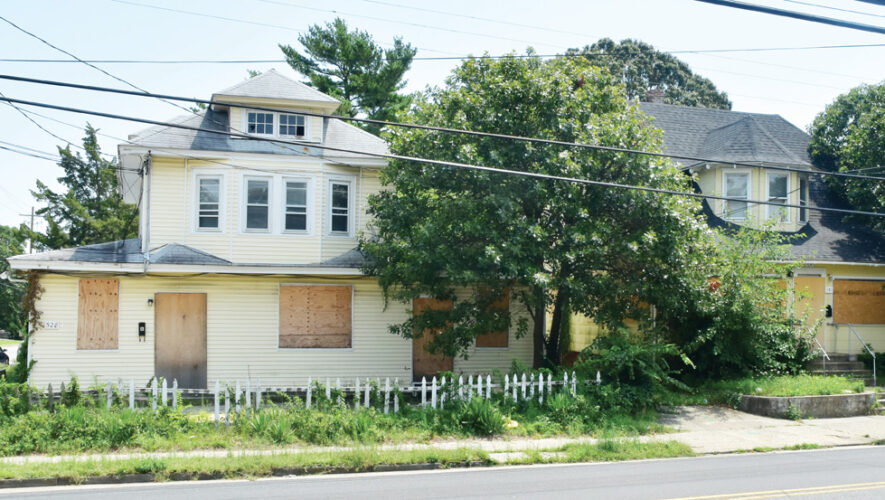Online presentations begin to discuss massive scope, impacts, timeline
In an online presentation Monday night, federal and state officials said the massive flood mitigation project proposed for New Jersey’s coastal and back bay communities needs considerable public input to look at all of the potential environmental impacts.
Officials said they will need to manage their own expectations for a project estimated to cost at least $16 billion with construction not beginning for almost a decade.
The New Jersey Department of Environmental Projection, in conjunction with the U.S. Army Corps of Engineers, offered the presentation and allowed questions as it gets public feedback on its tentatively selected plan (TSP) for flood mitigation along the back bays.
The feasibility report and tier one environmental impact statement present preliminary findings to identify coastal storm risk management strategies to increase resilience and reduce risk from future storms and compounding impacts of sea-level changes for the New Jersey Back Bays (NJBB) region.
This joint NJDEP and USACE project research began almost nine years ago, after the devastation caused by Hurricane Sandy in October 2012. The plan includes building massive storm surge barriers across Great Egg Harbor Inlet between Ocean City and Longport, Manasquan Inlet and Barnegat Inlet. The phased construction would begin in 2030.
The proposal incorporates multiple projects to reduce storm and flood damage and stretches from Neptune to Cape May. It covers 950 square miles of coastal area in Cape May, Atlantic, Ocean, Burlington, and Monmouth counties. The plan also includes cross-bay barriers in the south end of Ocean City and along Absecon Boulevard.
“Our role is that we are a cost-sharing partner with this study and coordinating among municipalities,” NJDEP director of coastal engineering Bill Dixon said. “Collectively, all levels of government are going to need to assist.”
The $16 billion price tag is for construction costs, while the TSP estimates the annual operating and maintenance costs are $196 million.
“This is a huge effort and we have to manage our expectations,” U.S. Army Corps of Engineers coastal resilience scientist Jay Smith said. “We really need folks to share thoughts on how we can go through this together since it’s a huge expense for the federal government.”
USACE project manager Brian Bogle said the selected plan was chosen after a complete analysis of alternatives that did not perform as well as the currently selected plan.
“We are at the very beginning of formulating this plan and putting it out for public review,” USACE engineer Steve Allen said. “We have a whole bunch of different environmental and federal statutes we will need to achieve compliance on.”
Allen said the draft phase of the plan would continue to the final stage, and the final statement is expected to be issued in April 2023.
“One of the key things discussed in the environmental impact statement is the range of impacts and there will have to be compensatory mitigation to replace what is lost,” Allen said. “There are also indirect environmental impacts on the ecosystem, fisheries [to be considered].”
The report is over 500 pages and additionally calls for elevation and flood proofing of 18,000 structures, including northern Atlantic County on the mainland shoreline and on Brigantine “and in large portions of Cape May County.” Nearly half of the structures that need to be raised are in Cape May County (8,579; about 1,500 are in Atlantic County. The rest are in Ocean County (8,567), Monmouth County (135), and Burlington County (66).
Smith added that the project timeline includes receiving public comments, moving forward with authorization and congressional approval in 2023-2024, a chief’s report in 2023, then pre-construction and engineering design in 2024, and an appropriation of construction funds anticipated in 2025.
“This [timeline is] under ideal circumstances and pending congressional approval,” Smith said. “We anticipate starting incremental construction commencement in 2030 with a scaled approach.”
Feedback from the public is essential moving forward, Smith said.
“This project is constructed in phases because it could take a dozen years or more,” he said. “It’s important to think about the magnitude of the project, the challenges with sea level rise and increasing future storm intensity.”
Dixon added any municipalities that want to discuss the plan offline can reach out to the U.S. Army Corps of Engineers.
Comments on the draft report and tier one environmental impact statement are requested by Oct. 12. The link for online comment is https://www.nap.usace.army.mil/Missions/Civil-Works/New-Jersey-Back-Bays-Study/. Comments can be emailed to PDPA-NAP@usace.army.mil or submitted in writing to USACE Philadelphia District, Planning Division, 100 Pen Square E. Philadelphia, PA 19107.
By RACHEL SHUBIN/Special to the Sentinel


